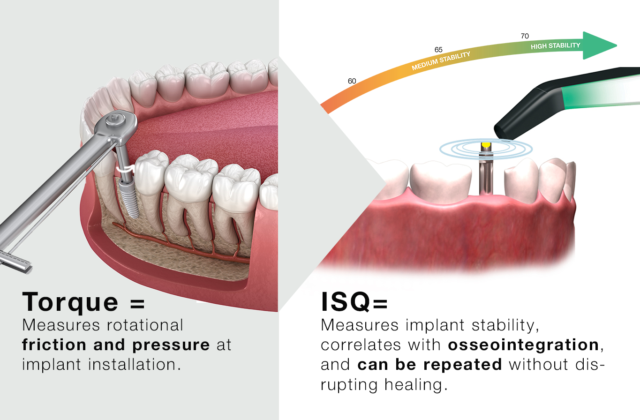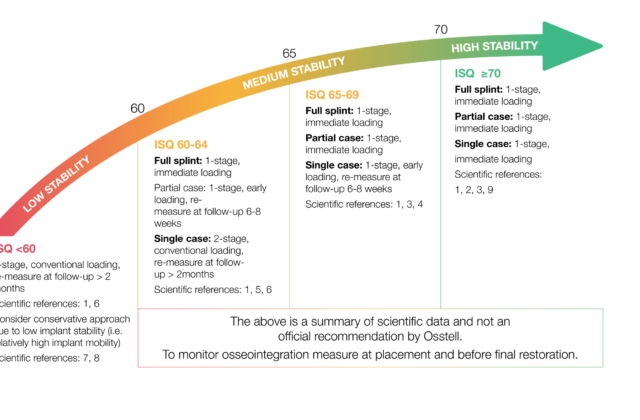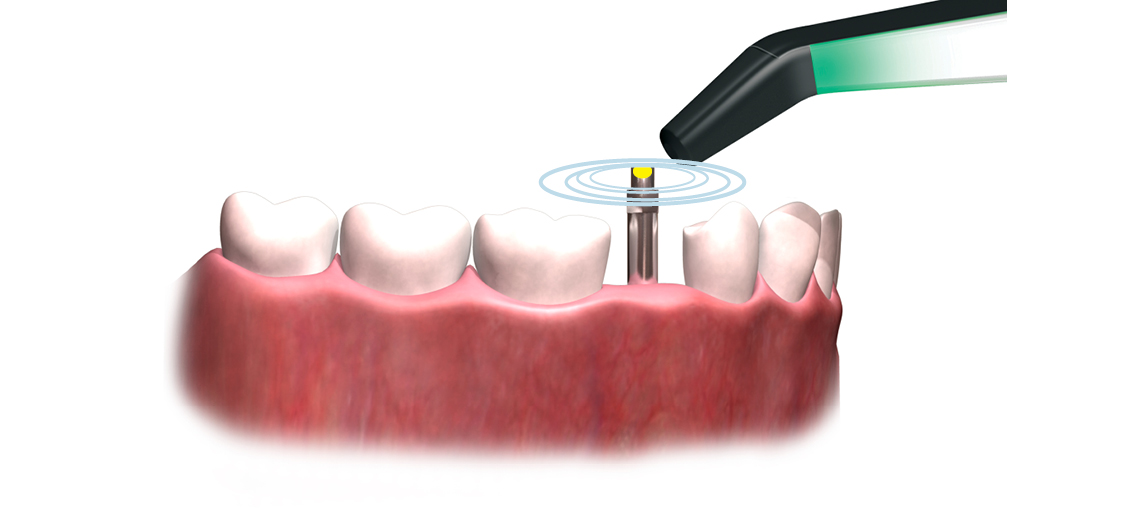
The technique behind Osstell
Osstell's patented technology uses Resonance Frequency Analysis (RFA) that measures the frequency with which a device vibrates. By comparing resonance frequencies, the stability of a dental implant can be determined as the resonance frequency changes with different stabilities.
Resonance Frequency Analysis
Resonance Frequency Analysis (RFA) is the measurement of the frequency with which a device vibrates. There are several detection methods for the resonance frequency, one of them is to listen to the sound of the vibration frequency in the audible range. By comparing resonance frequencies, the stability of a dental implant can be determined as the resonance frequency changes with different stabilities. A sensor is mounted on top of the implant and the sensor is then brought to vibration by gently moving it with magnetic pulses. The sensor will vibrate for a short while and then stop. If the implant stability (stiffness of the bone-implant interface) increases, the vibration frequency of the sensor will increase.
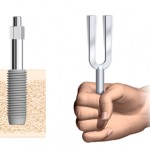
ISQ
ISQ is short for “Implant Stability Quotient”. The ISQ-scale runs from 1 to 100 and corresponds to the resonance frequency in a close to linear way. The reason for using ISQ instead of the resonance frequency expressed in Hz, is simply because it is easier to communicate. The scale was determined in 2003, and ISQ 1 correspond approximately to 1,000 Hz and ISQ 100 correspond approximately to 10,000 Hz. The early scientific studies were used to determine how the ISQ scale should relate to Hz and numerous clinical studies after that have put the ISQ-scale in a clinical context, relating to treatment adn loading protocols.
Micro Mobility
The distance the implant moves when subjected to 1 N lateral load 10 mm above bone level, here expressed as μm/N. The load is applied at a certain distance from the bone level. Micro mobility is determined by e.g. bone density in general and the degree of osseointegration, preparation of the implant site and the implant design. The correlation between micro mobility (μm/N) and ISQ is non-linear and micro mobility is reduced with app. 50 % when ISQ increases from 60 to 70 ISQ.
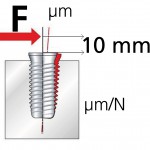
Micro motion
The distance the implant moves, when subjected to a determined lateral load, in μm. Micro motion = micro mobility (μm/N)*load (N) Depends on the degree of micro mobility and the applied load e.g. bite force, no of implants and prosthetic design. The correlation between micro motion (μm) and load (N) is linear, the more lateral load the more micro motion. The same load (N) will give different micro motion (μm) in different bone quality. It is well known that too much micro motion will jeopardize the osseointegration process. Scientific ISQ data indicates that implants with high ISQ-values seem to withstand even high forces in the mouth and still osseointegrate. This is also well in accordance with the theoretical model.
ISQ, micro mobility and micro motion
The Osstell technique is an indirect measurement of osseointgration. It measures the resonance frequency of the connected SmartPeg which reflects the micro mobility of the implant. This way of measuring has several advantages compared to direct techniques like ”knocking” (percussion based techniques) on the implant.
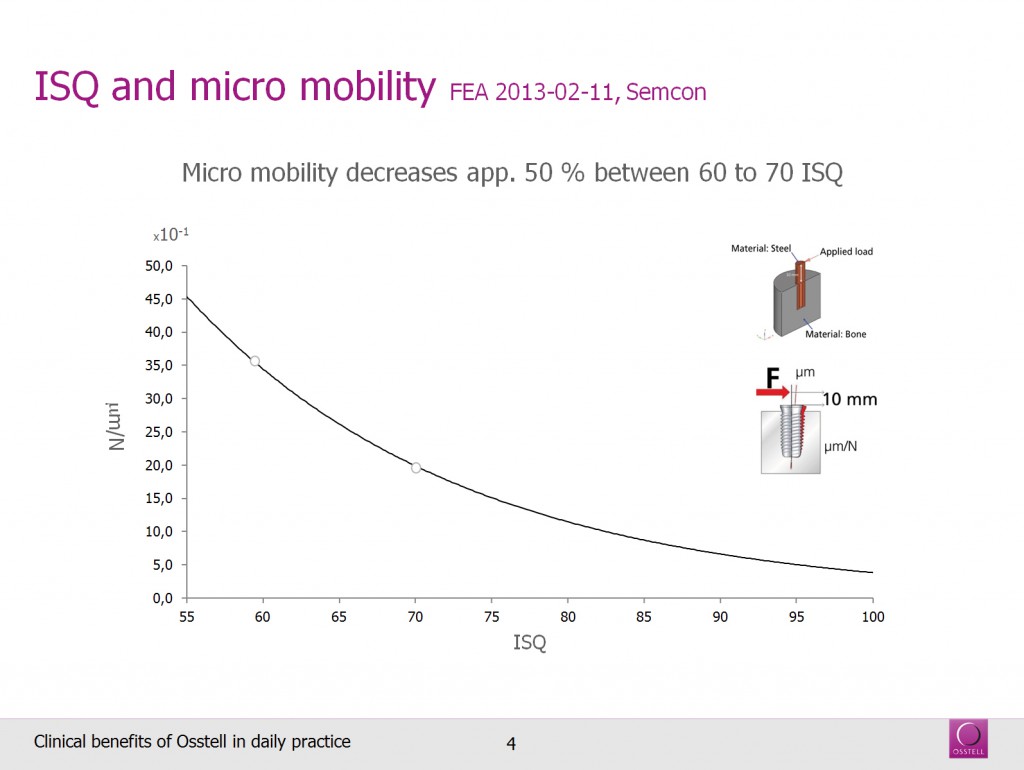
The influence of the mass of the implant will be minimal and the very low energy transferred to the implant is non-invasive. The measurement is totally objective; no matter who is using the system, the result will always be the same. The measurement is accurate, repeatable and can be used to monitor osseointegration without jeopardizing the biological process.
References
The relationship between resonance frequency analysis (RFA) and lateral displacement of dental implants: an in vitro study Pagliani L, Sennerby L, Petersson A, Verrocchi D, Volpe S & Andersson P Journal of Oral Rehabilitation 2012
Implant Stability Quotient (ISQ) vs Direct in Vitro Measurement of Primary Stability (Micromotion): Effect of Bone Density and Insertion Torque Paolo Trisi PhD, Teocrito Carlesi DDS, Marco Colagiovanni DDS, Giorgio Perfetti MD, DDS Journal of Osteology and Biomaterials, Volume 1, Number 3, 2010
Tissue integration in Oral and Maxillo-Facial Reconstruction Editor: D. van Steenberghe Co-editors: T. Albrektsson, P.-I. Brånemark, P.J. Henry, R. Holt, G. Lidén Proceedings of an International Congress May 1985, Brussels. Excerpta Medica 1986
Reosseointegration of mechanically disintegrated implants in dogs: mechanical and histometric analyses Sungtae Kim, Jung-Seok Lee, Ji-Wan Hwang, Min-Soo Kim, Seong-Ho Choi, Ui-Won Jung Journal: Clinical Oral Implant, Year: 2013, Issue, chapter, pages: 2013, 1–6
The relationship between initial implant stability quotient values and bone-to-implant contact ratio in the rabbit tibia Park IP, Kim SK, Lee SJ, Lee JH. Journal: J Adv Prosthodont. Year: 2011 Clinic: Department of Prosthodontics and Dental Research Institute, School of Dentistry, Seoul National, University, Seoul, Korea. Issue, chapter, pages: Jun;3(2):76-80. Epub 2011 Jun 30.
Determination of primary stability: a comparison of the surgeon’s perception and objective measurements Degidi M, Daprile G, Piattelli A. Int J Oral Maxillofac Implants. 2010 May-Jun;25(3):558-61
The relationship between resonance frequency analysis (RFA) and lateral displacement of dental implants: an in vitro study Pagliani L, Sennerby L, Petersson A, Verrocchi D, Volpe S, Andersson P. J Oral Rehabil. 2012 Dec 28. doi: 10.1111/joor.12024. [Epub ahead of print]
Implant Stability Quotient (ISQ) vs direct in-vitro measurement of primary stability (micromotion): effect of bone density and insertion torque Trisi P, Carlesi T, Colagiovanni M, Perfetti G J Osteol Biomat 2010; 1:141-151
